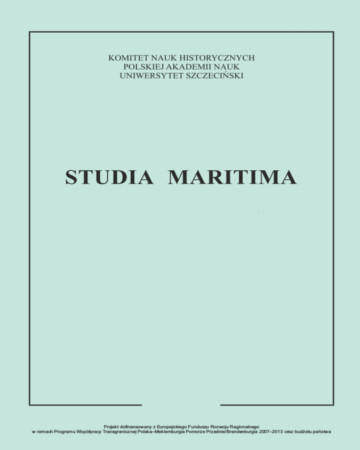| 1. | Aharoni Y., Rothenberg B., In the footsteps of kings and rebels in the Judean desert (po hebrajsku), Tel Aviv 1960. |
| 2. | Avitsur S., Man and his work: historical atlas of tools and workshops in the Holy Land, |
| 3. | Carta & Israel Exploration Society, Jerusalem 1976. |
| 4. | Bar Adon P., Qasr el-Yahud, w: Excavations in the Judean Desert, „ʻAtiqot” Vol. 9, Jerusalem: Israel Antiquities Authority 1989, s. 18–29 (po hebrajsku). |
| 5. | Bar Adon P., Rujm el-Bahar, w: Excavations in the Judean Desert, „ʻAtiqot” Vol. 9, Jerusalem: Israel Antiquities Authority 1989, s. 3–14 (po hebrajsku, sumarium po angielsku s. 4–5*). |
| 6. | Bar Adon P., Another Settlement of the Judean Desert Sect at ‘En el-Ghuweir on the Shores of the Dead Sea, „Bulletin of the American Schools of Oriental Research” 1977, nr 227, s. 1–25 (sumarium po angielsku, s. 4–5*). |
| 7. | Briks P., Ślady żeglugi po Morzu Martwym w starożytności (VII w. przed Chr. – II w. po Chr.), rozdz. „Warunki żeglugi”, „Klio” (w druku). |
| 8. | Calmet A., Taylor Ch., Wells E., Calmet’s Great Dictionary of the Holy Bible (…), Samuel Etheridge 1814. |
| 9. | Cansdale L., Qumran and the Essenes: A Re-evaluation of the Evidence, Texte und Studien zum Antiken Judentum 60, Tübingen 1997. |
| 10. | Carter R.A., Boat remains and maritime trade in the Persian Gulf during the sixth and fifth millennia BC, „Antiquity” 2006, nr 80, s. 52–63. |
| 11. | Carter R.A., The social and environmental context of neolithic seafaring in the Persian |
| 12. | Gulf, w: The global origins and development of seafaring, red. A. Anderson, J.H. Barrett, K.V. Boyle, Cambridge 2010, s. 191–202. |
| 13. | Carter R.A., Ubaid-period boat remains from As-Sabiyah: excavations by the British archaeological expedition to Kuwait, „Proceedings of the Seminar for Arabian Studies” 2002, nr 32, s. 13–30. |
| 14. | Casson L., Ships and Seamanship in the Ancient World, Princeton 1971. |
| 15. | Clamer Ch., Ain Ez-Zara Excavations 1986, „Annual of the Department of Antiquities of Jordan” 1989, nr 33, s. 217–225. |
| 16. | Clamer Ch., Fouilles archeologiques de ‘Ain ez-Zdra/Callirhoe, villegiature herodienne, Beirut 1997. |
| 17. | Clamer Ch., The Hot Springs of Kallirrhoe and Baarou, w: The Madaba Map Centenary 1897–1997, red. M. Piccirillo, E. Alliata, Jerusalem 1999, s. 221–225. |
| 18. | Connan J., Carter R.A., Crawford H.E.W., Tobey M., Charrie-Duhaut A., Jarvie D., Albrecht P., Norman K., A comparative geochemical study of bituminous boat remains |
| 19. | from H3, As-Sabiyah (Kuwait), and RJ-2, Ra’s al-Jinz (Oman), „Arabian Archaeology and Epigraphy” 2005, nr 16/1, s. 21–66. |
| 20. | Connan J., Use and trade of bitumen in antiquity and prehistory: molecular archaeology reveals secrets of past civilizations, „Philosophical Transactions of the Royal Society of London: Biological Sciences” 1999, nr 354 (1379), s. 33–50. |
| 21. | Dvorjetski E., The Medicinal Hot Springs of Kallirrohe, „Ariel” 1995, nr 110–111, s. 306–308 (po hebrajsku). |
| 22. | Eshel H., The Dates used during the Bar Kokhba Revolt, w: The Bar Kokhba War Reconsidered, red. P. Schäfer, „Text and Studies in Ancient Judaism” 2003, nr 100, s. 93–100. |
| 23. | Friedman Z., Did Nabatean Seafaring Exist?, „Michmanim” 2014, nr 25, s. 23*–30*. |
| 24. | Hadas G., Stone Anchors from the Dead Sea, „ʻAtiqot” 1992, nr 21, s. 55–57. |
| 25. | Hadas G., A Stone Anchor from the Dead Sea, „International Journal of Nautical Archaeology” 1993, nr 22, s. 89–90. |
| 26. | Hadas G., Dead Sea Anchorages, „Revue Biblique” 2011, nr 2 (118), s. 166–167. |
| 27. | Hadas G., Dead Sea Sailing Routes during the Herodian Period, „Bulletin of the Anglo- Israel Archaeological Society” 2008, nr 26, s. 31–36. |
| 28. | Hadas G., Lifschitz N., Bonani G., Two Ancient Wooden Anchors from Ein Gedi, on the |
| 29. | Dead Sea, Israel, „International Journal of Nautical Archaeology” 2005, nr 34, s. 307–315. |
| 30. | Hadas G., Where was the Harbour of En Gedi Situated?, „Israel Exploration Journal” 1993, nr 43, s. 45–49. |
| 31. | Keel O., Küchler M., Orte und Landschaften der Bibel: Ein Handbuch und Studienreiseführer zum Heiligen Land, t. 2: Der Süden, Zürich 1982. |
| 32. | Magness J., The Community at Qumran in the Light of Its Pottery, w: Methods of Investigation of the Dead Sea Scrolls and the Khirbet Qumran Site: Present Realities and |
| 33. | Future Prospects, red. M.O. Wise, N. Golb, J. Collins, D. Pardee, „Annals of the |
| 34. | New York Academy of Sciences” 1994, nr 722, s. 39–48. |
| 35. | Meimaris Y., The Discovery of the Madaba Mosaic Map. Mythology and Reality, www. christusrex.org/ www1/ofm/mad/articles/MeimarisMap.html. |
| 36. | Netzer E., Masada III: The Buildings, Stratigraphy and Architecture, Jerusalem 1991. |
| 37. | Netzer E., Architecture in Palaestina Prior to and During the Days of Herod the Great, Akten des 13. Internationalen Kongresses für klassische Archäologie Berlin 1988, |
| 38. | Mainz 1990, s. 37–50. |
| 39. | Netzer E., The palaces of the Hasmoneans and Herod the Great, Jerusalem 2001. |
| 40. | Nissenbaum A., Carmi I., Hadas G., Dating of Ancient Anchors from the Dead Sea, „Naturewissenschaften” 1990, nr 77, s. 228–229. |
| 41. | Nissenbaum A., Buckley S., Dead Sea asphalt in ancient Egyptian mummies – why?, „Archaeometry” 2013, nr 55/3, s. 563–568. |
| 42. | Nissenbaum A., Shipping Lanes of the Dead Sea, „Rehovot” 1991, nr 11/1, s. 19–24. |
| 43. | Nissenbaum A., The Dead Sea asphalts – Historical aspects: American Association of Petroleum, „Geologists Bulletin” 1978, nr 62, s. 837–844. |
| 44. | Oron A., Galili E., Hadas G., Klein M., Early Maritime Activity on the Dead Sea: Bitumen Harvesting and the Possible Use of Reed Watercraft, „Journal of Maritime Archaeology” 2015, nr 10/1, s. 66–88. |
| 45. | Rullkötter J., Nissenbaum A., Dead Sea asphalt in Egyptian mummies: molecular evidence, „Naturwissenschaften” 1988, nr 75/12, s. 618–621. |
| 46. | Schneller E., Antike Hafenanlage am Nordende des Toten Meeres?, „Zeitschrift des Deutschen Palästina-Vereins” 1963, nr 79, s. 138–139. |
| 47. | Schult H., Zwei Hafen aus römischer Zeit am Toten Meer: Rugm el-Bahr und el-Beled (ez-Zara), „Zeitschrift des Deutschen Palästina-Vereins” 1966, nr 82, s. 139–148. |
| 48. | Stern M., Greek and Latin Autors on Jews and Judaism, vol. I, Jerusalem 1974. |
| 49. | Strobel A., Wimmer S., Kallirrhoe (‚En ez-Zara): Drittes Grabungskampagne des Deutschen Evangelischen Instituts für Altertumswissenschaft des Heiligen Landes und Exkursionen in Süd-Peräa, Wiesbaden 2003. |
| 50. | Stutchbury H.E., Nicholl G.R., Khirbet Mazin, „Annual of the Department of Antiquities of Jordan” 1962, nr 6–7/3, s. 96–103. |
| 51. | The Comprehensive Aramaic Lexicon, praca zbiorowa, cal1.cn.huc.edu/oneentry. php?lemma=mxwz%20N&cits=all. |
| 52. | Yadin Y., Greenfield J.C., Yardeni A., Levine B.A., The Documents from the Bar Kokhba Period in the Cave of Letters, vol. II, Hebrew, Aramaic and Nabatean-Aramaic Papyri, „Judaean Desert Studies” 2002, nr 3. |
| 53. | Zangenberg J., Das Tote Meer in neutestamentlicher Zeit, w: Nach Petra und ins Königreich der Nabatäer: Festschrift Manfred Lindner, red. E.A. Knauf, U. Hübner, R. Wenning, Bonner Biblische Beiträge 118; Bodenheim 1998, s. 49–59. |
| 54. | Zangenberg J., Die hellenistisch-römische Zeit am Toten Meer, w: Das Toten Meer: Kultur und Geschichte am Tiefsten Punkt der Erde, red. J. Zangenberg, Mainz 2010, s. 39–52. |
| 55. | Zangenberg J., Wildnis unter Palmen? Khirbet Qumran im regionalen Kontext des Toten Meeres, w: Jericho und Qumran. Neues zum Umfeld der Bibel, red. B. Mayer, „Eichstätter Theologische Studien” 45, Regensburg 2000, s. 129–164. |
| 56. | Zangenberg J., Opening Up our View: Khirbet Qumran in Regional Perspective, w: Religion and Society in Roman Palestine: Old Questions, New Approaches, red. |
| 57. | R.E. Douglas, London–New York 2004, s. 170–187. |






